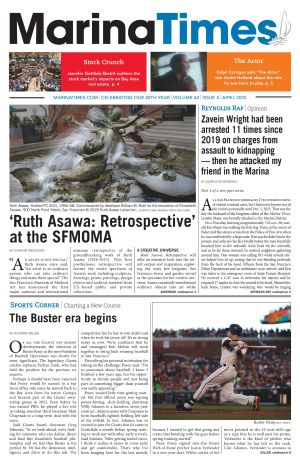The Spring real estate season had a healthy momentum at the start of the year but has now shifted into a pure reactive mode, adjusting to each new round of updates with the Trump administration’s tariff policies and resulting uncertainty that unfolds. The tariffs landed with whiplash speed and shook up the field earlier in April. And then — just as quickly — the administration hit pause. In early April, a 90-day hold was announced on goods compliant with the United States-Mexico-Canada Agreement (USMCA), buying the public some temporary breathing room from all the new change — but not much clarity.
So what does this all mean for the real estate market? Of course, the most immediate consequence is felt in the financial markets with the rise and fall of the Dow Jones and S&P depending on daily news from Washington. The housing inventory is finally being rolled out, but some home buyers in the Bay Area dependent on stock assets for their purchase end up pausing on whether to make an offer if they encounter the long-anticipated “perfect” home when pressed to make a decision. Mike Annunziata, the founder of North Point Real Estate, summed it up, “Buyers are active but more cautious. The days of jumping in with little hesitation seem to be behind us. People are weighing value and long-term implications much more carefully.”
Looking ahead, higher level tariffs could have sobering long-term effects on the housing and construction industries. The construction sector is already feeling the pinch from being stretched thin with the recent SoCal fire crisis: builders and developers in California, and specifically the Bay Area, are operating in one of the most expensive construction environments in the country, and faced rising project costs and timelines even before the tariffs were announced.
And now, since many essential materials for homebuilding are heavily imported from Canada and Mexico, it’s expected that items like lumber, cement, steel, aluminum, and appliances are expected to become more expensive, driving up overall building costs and leading to even further delays. A recent National Association of Home Builders analysis noted that builder confidence has fallen since February to its lowest level in five months, and NAHB Chairman Buddy Hughes was recently quoted in SF Gate, “Builders have expressed growing uncertainty over market conditions as tariffs have increased price volatility for building materials at a time when the industry continues to grapple with labor shortages and a lack of buildable lots.”
Mike Annunziata explained, “Tariffs drive up costs, especially for building materials and that slows down new supply and creates hesitation. In a city like San Francisco, where affordability is already a challenge, this just makes things more difficult. Homes that need little or no work are going to remain highly desirable in this environment.”
While buyers and sellers remain active, the broader market is now in a holding pattern — cautious, watchful, and waiting to see what comes next. Before the tariffs, there was growing optimism that the Federal Reserve might soon begin cutting interest rates, possibly pushing mortgage rates below 6% — a move that many in the mortgage industry believed would boost both buyer activity and seller confidence.
As for sellers, motivation remains rooted in life transitions — marriage, divorce, growing families, or downsizing. But there’s a palpable sense of caution. “There’s a feeling that anything can happen and some people are waiting for the next shoe to drop,” Annunziata added. And yet, amid the turbulence, some segments of the market are proving remarkably resilient. “The high-end market is surprisingly strong,” Annunziata said. “Luxury listings, when done right, are still moving quickly—often over asking. These buyers aren’t fazed by interest rates or tariffs. They’re thinking long-term.”
With the 90-day tariff pause set to expire in early July, the stakes are high for many sellers who are deciding to seize the tail end of the Spring season, rather than waiting for the Fall which may carry even more unknowns.
Jennifer Gottlieb-Shetrit is a realtor (CalDRE#: 02045019) at Compass serving the San Francisco Bay Area. She can be reached at [email protected] or www.JenniferShetrit.com.




